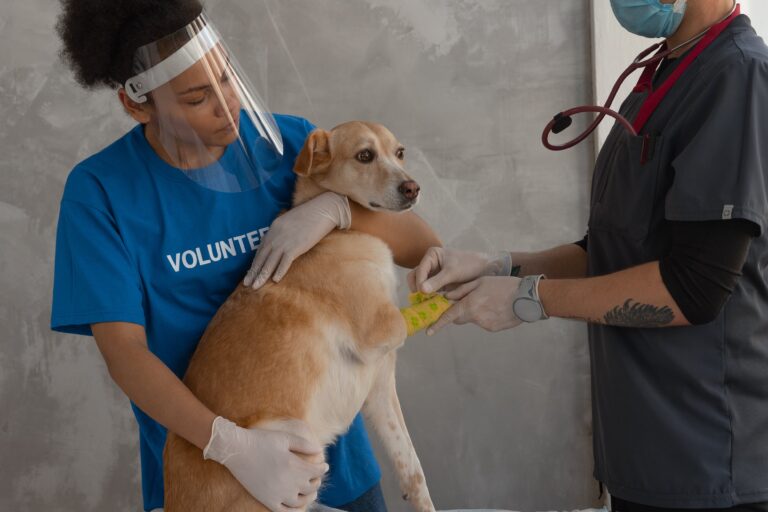Trupanion’s Stance on Spay Surgery Coverage Explained
As a responsible pet owner, one of the crucial decisions you’ll make for your furry friend is whether or not to have them spayed or neutered. This procedure not only helps control the pet population but also has numerous health and behavioral benefits for your pet. However, it’s essential to consider the financial aspect of such surgeries and whether your pet insurance, like Trupanion, covers spay surgery.
Understanding Trupanion’s Pet Insurance Coverage
Trupanion’s pet insurance is lauded for its comprehensive coverage, encompassing a broad range of unexpected veterinary costs. However, when it comes to routine procedures such as spay surgeries, the policy specifics can vary. This section explores Trupanion’s general approach and its specific stance on spay surgeries for both dogs and cats.
Does Trupanion Cover Spay Surgery?
The coverage for spay surgery or neutering can vary depending on the specific Trupanion policy you have. In general, Trupanion offers coverage for surgeries and medical procedures that are considered necessary for the health and well-being of your pet. This often includes spay and neuter surgeries, especially when recommended by a veterinarian.
However, it’s important to note that Trupanion, like other pet insurance providers, may have certain terms, conditions, and exclusions. The extent of coverage for spay surgery can depend on factors such as your location, the age of your pet, and the specific plan you’ve chosen.
How to Determine Your Coverage
If you’re a Trupanion policyholder or considering purchasing a policy, here are the steps to determine if spay surgery is covered:
- Review Your Policy Documents: The first and most crucial step is to carefully read through your policy documents. This includes the policy terms and conditions, as well as any specific information related to surgical procedures.
- Contact Trupanion Directly: If you have any doubts or need clarification, it’s a good idea to get in touch with Trupanion’s customer service. They can provide you with precise information regarding your policy’s coverage for spay surgery.
- Check Your Online Account: Many pet insurance providers, including Trupanion, offer online account management. Log in to your account to access detailed information about your coverage, claims, and any applicable deductibles or copayments.
Why Spaying or Neutering Is Important for Your Pet
Before delving further into the coverage details, let’s briefly discuss why spaying or neutering your pet is an essential aspect of responsible pet ownership.
1. Population Control
One of the primary reasons for spaying and neutering is to help control the pet population. Millions of dogs and cats end up in animal shelters every year, and many of them are euthanized due to overcrowding. By spaying or neutering your pet, you’re contributing to reducing the number of unwanted animals and helping to alleviate the strain on shelters and rescue organizations.
2. Health Benefits
Spaying and neutering can have numerous health benefits for your pet:
- Reduced Risk of Certain Diseases: Spaying a female pet can reduce the risk of uterine infections and breast tumors, some of which can be cancerous. Neutering a male pet can prevent testicular cancer and reduce the risk of prostate problems.
- Prevention of Heat Cycles: Female pets go through heat cycles, which can be messy and frustrating for both you and your pet. Spaying eliminates this behavior.
- Reduction in Roaming and Aggressive Behavior: Neutered males are less likely to roam in search of a mate and are generally less aggressive, reducing the risk of fights and injuries.
3. Behavioral Benefits
Spaying and neutering can also positively impact your pet’s behavior:
- Reduced Aggression: Neutered males are often less aggressive and less likely to engage in territorial or dominance-related behaviors.
- Less Marking and Urine Spraying: Unneutered males are more likely to mark their territory with urine. Neutering can reduce or eliminate this behavior.
- Reduced Roaming: Intact males and females are more likely to roam in search of a mate, increasing the risk of accidents and getting lost.
Given these health and behavioral benefits, spaying or neutering your pet is generally recommended by veterinarians, and it’s essential to consider whether your pet insurance, such as Trupanion, covers this procedure to make it more accessible for you.
Conclusion
In summary, Trupanion pet insurance can provide coverage for spay surgery and neutering, but the extent of coverage may vary depending on your specific policy and circumstances. To determine whether spay surgery is covered under your Trupanion policy, carefully review your policy documents, contact their customer service for clarification, or check your online account for details.
Remember that while pet insurance can assist with the costs of medical procedures, it’s essential to discuss your pet’s healthcare needs with your veterinarian and make informed decisions regarding their health and happiness.
FAQ
1. Does Trupanion cover spay surgery for all pet breeds?
Trupanion’s coverage for spay surgery typically applies to all breeds of dogs and cats. However, it’s essential to review your specific policy to confirm the coverage details, as some policy variations may apply based on factors like age and location.
2. Is there a waiting period before I can claim coverage for spay surgery?
Yes, most pet insurance policies, including Trupanion, have waiting periods before certain coverages, including spay surgery, become effective. The length of the waiting period can vary, so it’s crucial to refer to your policy documents or contact Trupanion for precise information regarding waiting periods.
3. Are there any additional costs or deductibles for spay surgery coverage?
Trupanion policies may have deductibles and copayment percentages, depending on your chosen plan. These financial aspects can affect your out-of-pocket expenses for spay surgery. Be sure to understand your policy’s deductible and copayment terms to plan accordingly for any additional costs.






